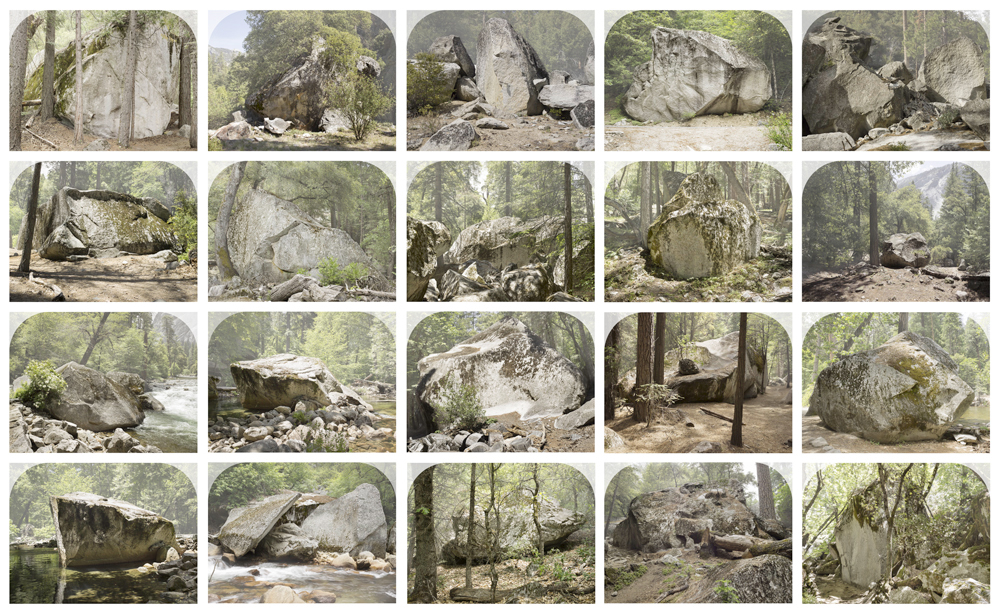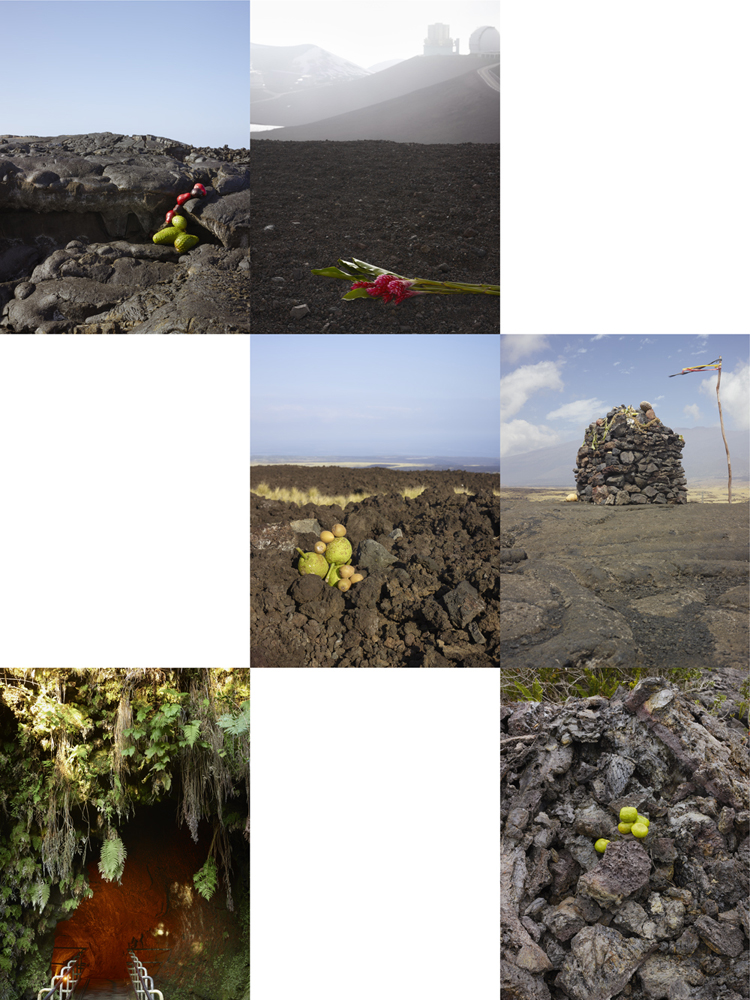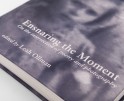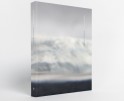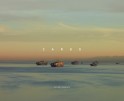ART + SCIENCE: Sharon Harper
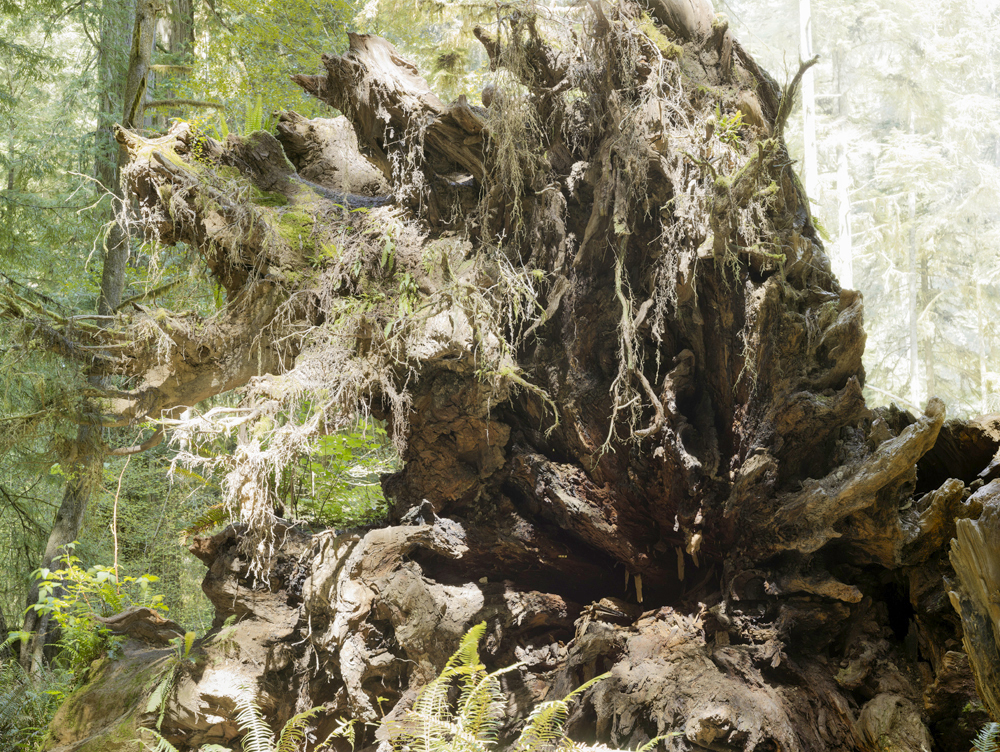
©Sharon Harper, Some Observations on Movements of the Earth, 2014- Ancient Redwoods, Rainforest California, No. 1 40 x 50 inches, color chromogenic print
Sharon Harper is a photographer and educator based in Massachusetts. She is Professor of Visual Arts and Visual and Environmental Studies at Harvard University. Her photography and video explore the boundaries of art and science. In a previous series, Moon Studies and Star Scratches, she created photographs using multiple exposures that captured the movements of the moon and stars, presenting a poetic interpretation of our world. In her new collection of photographs, Some Observations on Movements of the Earth, Harper takes a different approach. The work lures the viewer in with a pensive scrutiny of how our world is being shaped in the hands of man. This work tells an ongoing and compelling story that provides a record of the current state of land formations.
Harper recently presented Some Observations on Movements of the Earth during her keynote presentation at second annual Photo + Sphere Festival (November 7-11, 2018) in Asheville, North Carolina. This art and science festival explores the environment through photography and photo-media. Gathering nationally known speakers and panelists, exhibitions, films, and performances at venues throughout Asheville, the focus of the festival is to bring attention to how we see the environment and role humans play in determining the future of our planet.
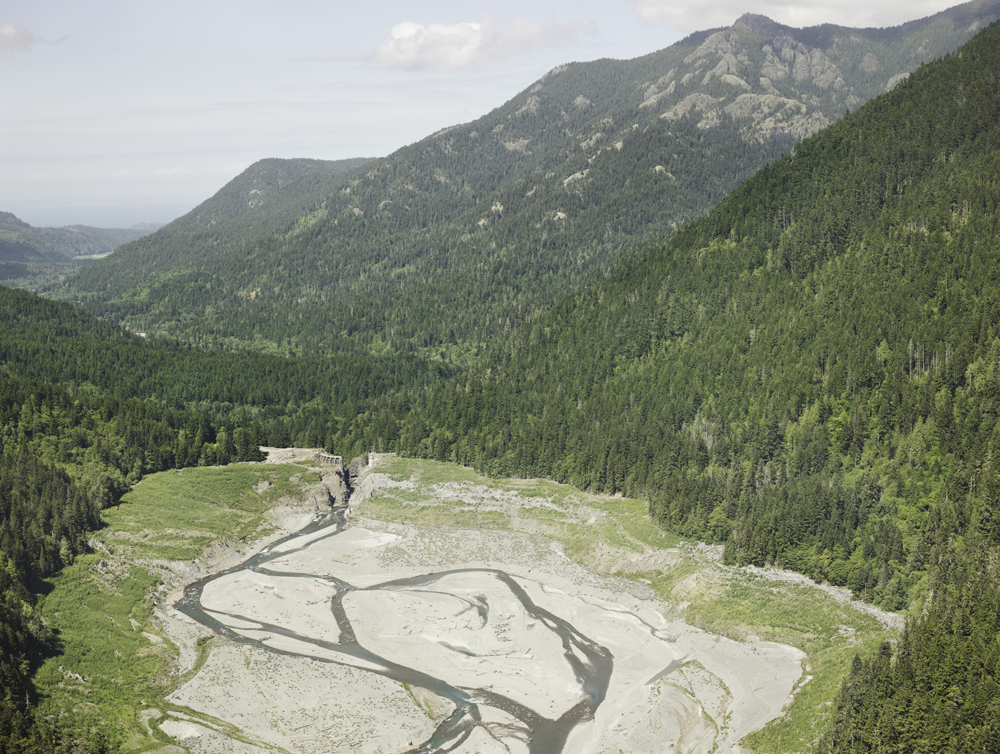
©Sharon Harper, Some Observations on Movements of the Earth, 2014- Elwah River Dam Removal, River Restoration Washington, No 1 40 x 50 inches, color chromogenic print

©Sharon Harper, Some Observations on Movements of the Earth, 2014- Ancient Redwoods, Rainforest Washington and California with text from Thomas Berry’s The Great Work 30 x 50 inches, printed, folded newsprint piece
Sharon Harper’s work explores technology and perception. Her experimental work uses photography and video to create poetic connections between the environment and ourselves. Harper’s work is in permanent collections at the Museum of Modern Art, New York, the Whitney Museum of American Art, The Museum of Fine Arts, Houston, The Albright-Knox Art Gallery in Buffalo, the Harvard Art Museums, the Santa Barbara Museum of Art in Santa Barbara, California, the Nelson-Atkins Museum in Kansas City, Missouri, The New York Public Library, and the Denver Art Museum among other collections. She is the recipient of a Guggenheim Fellowship in Photography, a Meredith S. Moody Residency Fellowship and an Elizabeth Ames Residency Fellowship at Yaddo, a Sam and Dusty Boynton Residency Fellowship at the Vermont Studio Center, and residency fellowships at the Headlands Center for the Arts in Sausalito, California the MacDowell Colony, the Ucross Foundation, the Virginia Center for the Creative Arts, the Monastery of Halsnøy, Norway and the Bernheim Arboretum and Research Forest in Kentucky. She received Film Study Center Fellowships at Harvard University in 2006 and in 2010. A monograph of her work, From Above and Below, was published by Radius Books in 2013. Her work is represented by Rick Wester Fine Art, New York. She is currently a Professor of Visual Arts, Visual and Environmental Studies at Harvard University.
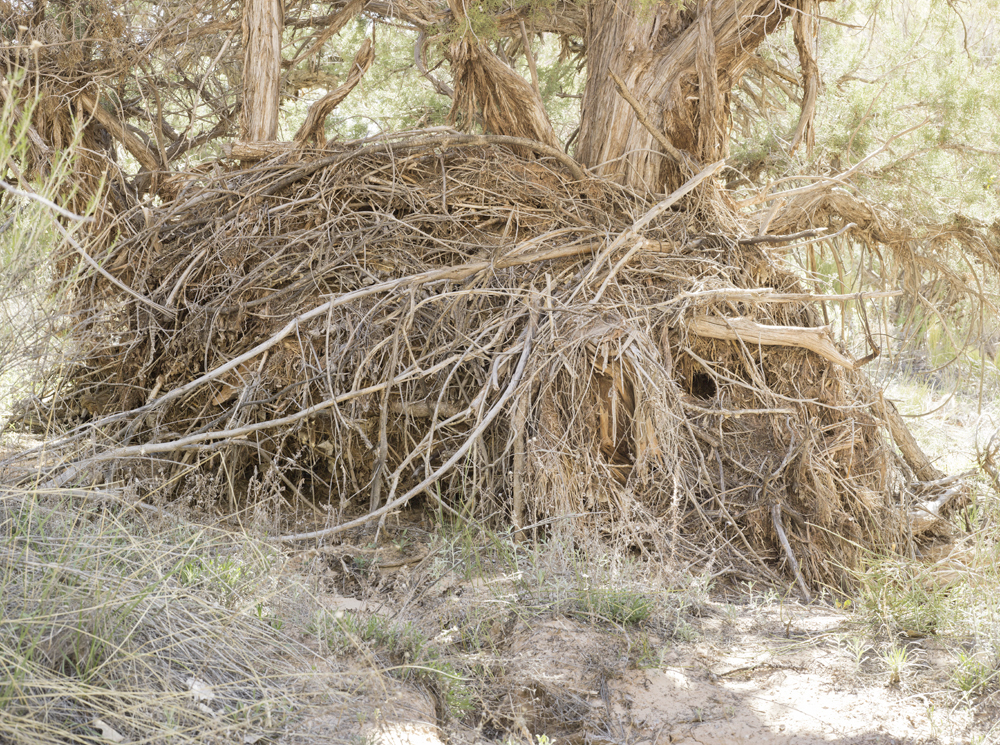
©Sharon Harper, Some Observations on Movements of the Earth, 2014- Desert Wash, Debris from Flash Floods Utah, No. 1 40 x 50 inches, color chromogenic print

©Sharon Harper, Some Observations on Movements of the Earth, 2014- Nurse Plants with Mistletoe, Sonoran Desert Arizona, No. 1 and No. 2 Diptych 30 x 40 inches each, color chromogenic prints
Harper’s most recent work Some Observations on Movements of the Earth is an ongoing series of photographs supported by the Guggenheim Foundation in 2014-2015. The series is an ongoing archive of photographs focused on reading land formation and the phenomena that shape it in geologic deep time. The current phase of the project is to respond to faster processes that transform the land in a human time span such as landslides, forest fires, flash floods and coastal erosion. In the midst of the Anthropocene, this record may function as a memorial as well as a record.
“Some Observations on Movements of the Earth” is an ongoing group of photographs focused on reading land formation and the phenomena that shape it in geologic deep time. The next phase of the project is to respond to faster processes that transform the land in a human time span such as landslides, forest fires, flash floods and coastal erosion. In the midst of the anthropocene, this record may function as a memorial as well as a record.
Phenomena that shape the land often happen off stage from the photograph and what one is left with to contemplate is its aftermath—carved canyons, strewn boulders, desert washes that leave tangled debris behind. The photographs within this series are grouped and titled according to the phenomena that shaped them, such as Rock Falls and River Canyons, The Desert Wash, Volcanic, etc. Plants and trees that persevere longer than a human life are also examined here. The groups, rocks, trees and plants are treated with visual devices to become like a specimen in a museum of natural history, offered so we may read and interpret them. Each group of photographs contains a visual language and logic that heighten the phenomena that formed it. Photographs of massive boulders in the group Rock Falls and River Canyons are treated as portraits. They are framed with 19th century and contemporary devises that emphasize the boulders as natural sculptural art formations, and raise questions about the forces that shaped them. Redwood trees that have the potential to live upwards of 2,300 years are flooded with an unnatural amount of light. The light emphasizes the idea of scrutiny. There is cross-pollination between the visual languages of the groups of photographs, bringing them into conversation with each other to tell an ongoing story of land formation.
These geologic stories of transformation implicate us in our own relationship to the land. They evoke the scientific process of examining the land as evidence, and suggest our existential connection to and curiosity about processes that dwarf our lifespan.

©Sharon Harper, Some Observations on Movements of the Earth, 2014- Nurse Plants, Sonoran Desert Arizona, No. 3 40 x 50 inches, color chromogenic print

©Sharon Harper, Some Observations on Movements of the Earth, 2014- Hurricane Irma 2017, Debris from High Winds and Storm Surge Florida Keys, No. 1 40 x 50 inches, color chromogenic print
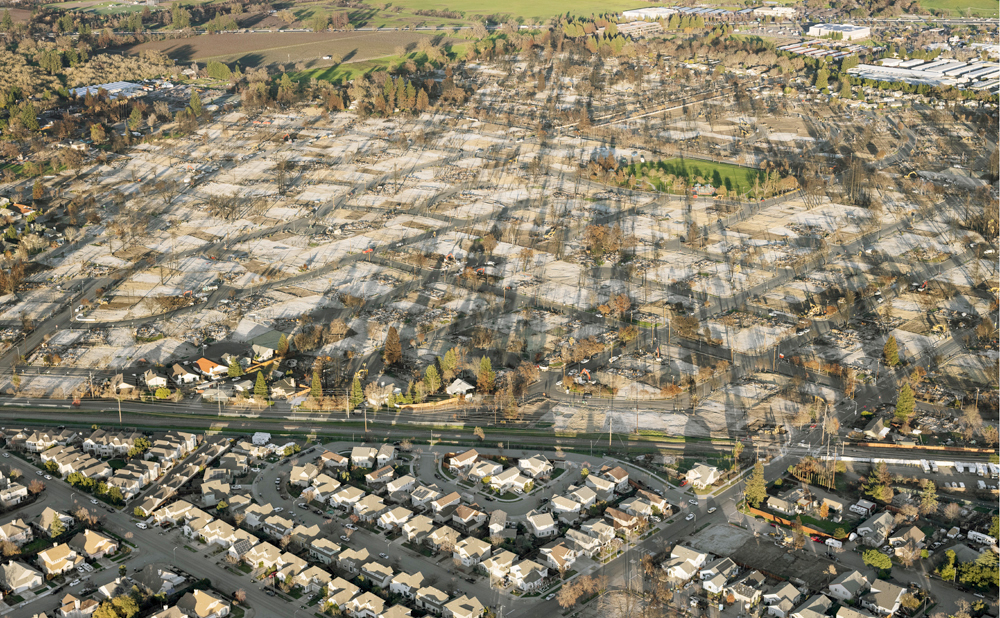
©Sharon Harper, Some Observations on Movements of the Earth, 2014- Tubbs Fire of October 2017, photographed December 2017 Santa Rosa, California Coffey Park Neighborhood 40 x 50 inches, color chromogenic print

©Sharon Harper, Some Observations on Movements of the Earth, 2014- Tubbs Fire of October 2017, photographed December 2017 Santa Rosa, California Coffey Park Neighborhood, Composite Image 40 x 50 inches, color chromogenic print

©Sharon Harper, Some Observations on Movements of the Earth, 2014- Hurricane Harvey August 25, 2017, photographed September 15, 2017 Buffalo Bayou River, Houston, Texas, Composite Image 40 x 50 inches, color chromogenic print

©Sharon Harper, Some Observations on Movements of the Earth, 2014- Ancient Trees, Petrified Wood Arizona, No. 1 40 x 50 inches, color chromogenic print

©Sharon Harper, Some Observations on Movements of the Earth, 2014- Rock falls and River Canyons California, No. 1 60 x 80 inches, color chromogenic print
Posts on Lenscratch may not be reproduced without the permission of the Lenscratch staff and the photographer.
Recommended
-
Aaron Rothman: The SierraDecember 18th, 2025
-
Linda Foard Roberts: LamentNovember 25th, 2025
-
Leah Ollman: Ensnaring the MomentNovember 2nd, 2025
-
Tristan Duke: Glacial OpticsAugust 1st, 2025
-
Richard Misrach: CargoJune 8th, 2025

